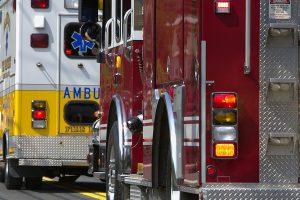
With rising crime rates and staffing challenges, law enforcement agencies are looking at new ways to utilize technology and data to become more efficient in protecting our communities. A recent report from Thomson Reuters found that 48 percent of law enforcement respondents said that staffing was their top issue of concern with two-thirds placing staffing within their top three areas of concern. Technology has been an answer to staffing and effectiveness concerns with tools like body-worn cameras, license-plate readers, and video surveillance being widely implemented in departments of all sizes. But to continue to meet efficiency and effectiveness goals, law enforcement agencies have to start looking beyond these traditional technologies to more cutting edge and IT-based solutions.
Drones
Drones are becoming a powerful tool for law enforcement agencies to extend the eyes and ears of their teams. Increasingly drones are being used as first responders to scan a situation to provide context and information back to responding officers before they get on the scene. This use extends from routine noise complaint calls to domestic disputes to large scale emergencies. In all of these situations, drones are able to get to a location faster than humans and provide exact location and situational awareness for officers to be more precise in their response. Continue reading


 September is
September is  In an effort to continue to keep us safe, law enforcement and other first responders are embracing and responding to the implementation of new technologies. In this post we'll take a look at three technology areas impacting how law enforcement carries out their mission - video, autonomous vehicles, and Internet of Things.
In an effort to continue to keep us safe, law enforcement and other first responders are embracing and responding to the implementation of new technologies. In this post we'll take a look at three technology areas impacting how law enforcement carries out their mission - video, autonomous vehicles, and Internet of Things. FirstNet is a nationwide wireless broadband network for first responders being built and deployed through a first of its kind public-private partnership. FirstNet was borne out of the September 11, 2001 tragedy where it became clear that the radio systems police, fire, and paramedics relied on did
FirstNet is a nationwide wireless broadband network for first responders being built and deployed through a first of its kind public-private partnership. FirstNet was borne out of the September 11, 2001 tragedy where it became clear that the radio systems police, fire, and paramedics relied on did
